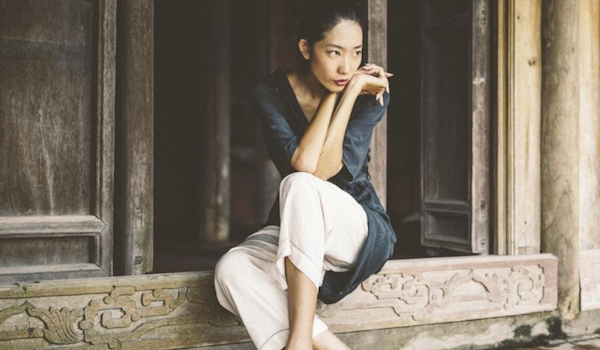
As Fresh As A Dasiy
As the days get longer and the sun begins to shine, we turn to Selvedge issue 76, when Amy de la Haye met the founder of the light and summery fashion brand, Sula...

Fashion, like the seasons, changes and recurs. On a recent visit to Brighton to see Alison Taylor, the designer-owner of Sula, she showed me some tiny samples of whitework; drawn thread, cutwork and white embroidery on white cloth. The workmanship involved in this technique was intricate and exquisite, and the diversity of designs offered was incredible. As I looked at these designs, Alison told me that she had just discovered a very small and little known workshop in Vietnam where this work has been undertaken by successive generations. When I met with her, Alison was just about to visit the workshop once again, to place orders for Sula’s spring/summer 2017 collection.

Whitework is an old and richly decorative technique, one which is also known as broderie anglaise (English embroidery), as it became immensely popular in England along with Madeira work, similarly named because it was famously made by a group of nuns who lived on the Portuguese island. White on white, it is a technique that is simultaneously decorative and plain. Whitework is often characterised by trailing floral and foliate embroidery; frills, flounces, tiny pin-tucks and cut-work perforations bound with a button hole stitch. The daisy is a recurring motif.The fabric used is usually woven from cotton with fine, sheer and lightweight cotton lawn, voile or organdie, and sometimes even fine linens or silks are also used in the process of its making. The colour white has associations of purity, cleanliness and simplicity and, in colour psychology it is often entwined with new beginnings. Not surprisingly then, it has been used extensively in the making of baby, bridal and ecclesiastical dress.

Vietnam does of course have its own very rich and diverse textile traditions. Whitework was originally brought over by the French when they colonised Vietnam in the 1880s (and the country did not obtain independence until 1954). With this long and plentiful history of whitework in the back of my mind, I was intrigued and curious to learn more about how Alison utilised the technique within her collection. I asked her if she would interview the Vietnamese embroiderers she mentioned, so that I could gain a closer understanding of their working practices, and how they felt about them.

For over a century, whitework has recurrently entered the fashionable summer wardrobe and its aesthetic has been represented in various guises. Far closer to its original emergence in the world of fashion, during the 1910s whitework dresses – known as lingerie dresses because of the similarity of fabric used for undergarments – were the height of afternoon chic. Some 50 years later, when I interviewed Mary Quant (the London-born fashion designer known for her young and modern style of design) she explained that her 1960s collections had actually been very much inspired by the Edwardian children’s undergarments she once saw in the collections of the Victoria & Albert Museum in London...
You can read this article in full in Selvedge issue 76.
